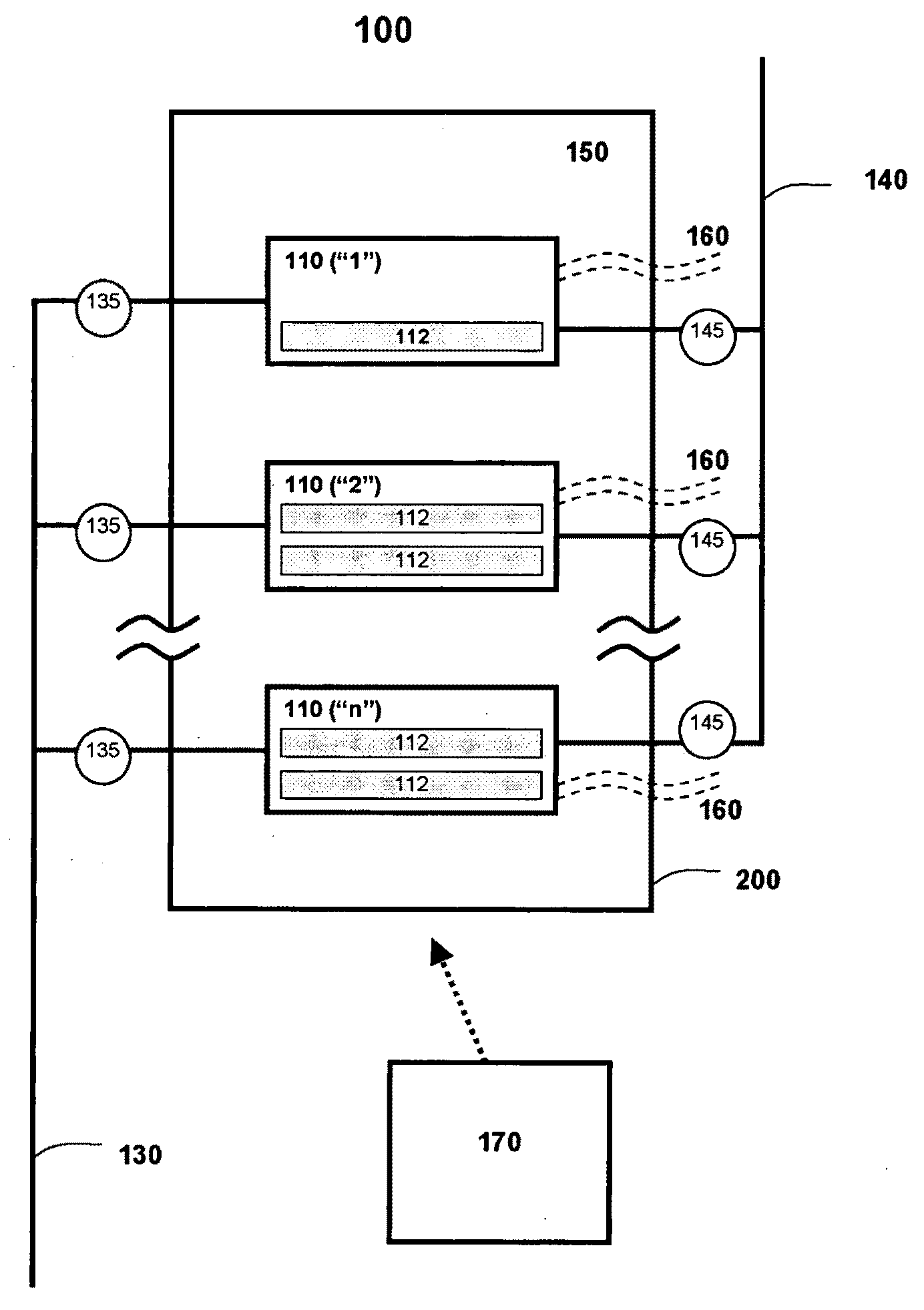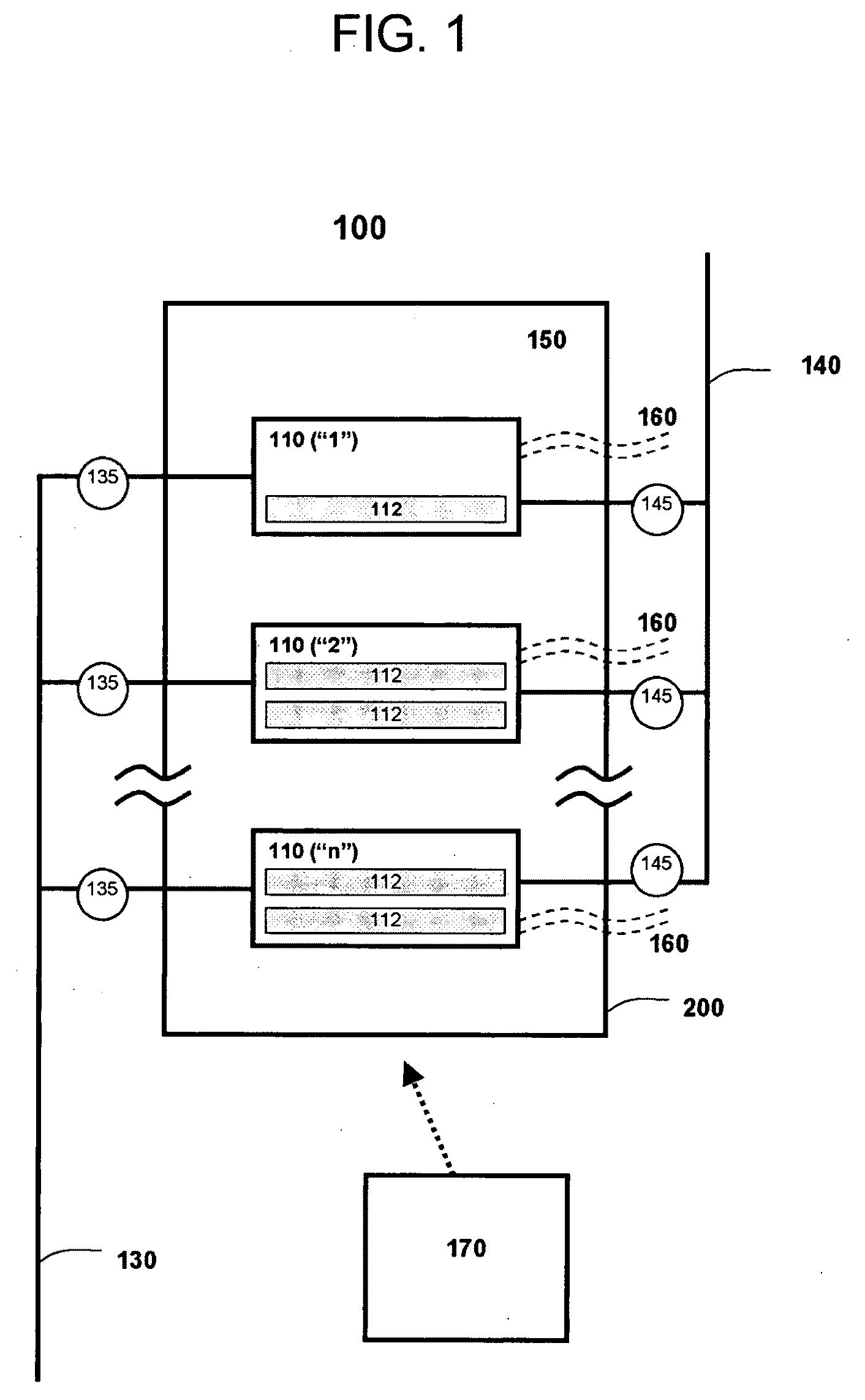Segmented solid oxide fuel cell stack and methods for operation and use thereof
a fuel cell and solid oxide technology, applied in the direction of fuel cells, fuel cell control, solid electrolyte fuel cells, etc., can solve the problems of toxicity of anodes, /or lifetime limitations, and many challenges in design and operation
- Summary
- Abstract
- Description
- Claims
- Application Information
AI Technical Summary
Benefits of technology
Problems solved by technology
Method used
Image
Examples
example 1
Recovery of Chromium Poisoned Cathode
[0084]Loss of cathode performance by Cr-poisoning during initial cathode operation in Cr-oxide vapor under cathodic polarization and performance recovery were demonstrated by the example of a symmetric cathode / cathode single cell pump sample with (La0.8Sr0.2)0.97MnO3 / 3YSZ composite cathodes and Ag / 3YSZ-based current. Cathode impedance and cathode current density were evaluated as a function of applied potential in the presence of a Cr2O3 powder bed under dry or humid air flow at 750° C. The cathode performance degradation was found to remain relatively small over the chromia powder bed after an initial stabilization period as long as no bias (simulated polarization) was applied. The initial cell performance in air is shown in FIG. 10A by the i-V characteristics before any polarization in Cr2O3.
[0085]The operating cathode pump cells were then exposed to bias (simulating cathode polarization in operating devices / stacks) which leads to the known poi...
example 2
Electrochemical Activation of the Cathode
[0091]FIG. 16 illustrates the performance gain that can be achieved when a cathode is cathodically polarized. For example, a simple experimental was constructed using a symmetric cathode pump cell of example 1, in which strong cathodic polarization and high current densities are achieved by application of a cathodic bias. Due to the cathodic polarization and / or high current density, the cathode is activated and exhibits a long-term improvement in performance. FIG. 16 presents exemplary results for a cathode pump sample with electrodes made of a thin LSM cathode layer with a Ag-based current collector. The cathode has a very low triple phase boundary density. It was submitted to an exemplary electrochemical activation cycle at −0.4V. The evolution of the cathode resistance during the electrochemical activation is illustrated in FIG. 16. The filled circles indicate the total cathode resistance. The filled squares indicate the charge transfer re...
example 3
Activation of the Anode by Redox-cycling
[0092]During operation, Ni-based anodes can suffer a slow degradation of performance due to alloying with current collector metals, impurities, or by poisoning species in the gas stream. The initially active metallic nickel transforms into a less active, alloyed nickel. This is demonstrated with the example of a single cell with LSM / YSZ cathode and Ni-YSZ anode operating at 720° C. in 33% H2 / 67% N2 and air, wherein periodic oxidation / reduction cycles can be used to improve the overall performance of the anode. FIG. 17 illustrates an example where the anode is repeatedly submitted to air, oxidized and then afterwards again reduced and operated. Each redox-cycle (indicated by R1 and R2) introduces a significant increase in performance with a slow decay over several hours, ultimately reaching the performance an equivalent sample would show had it not undergone the oxidation. The current densities in FIG. 17 are measured in 33% hydrogen and 67% ni...
PUM
| Property | Measurement | Unit |
|---|---|---|
| frequency | aaaaa | aaaaa |
| temperature | aaaaa | aaaaa |
| electrical power rating | aaaaa | aaaaa |
Abstract
Description
Claims
Application Information
 Login to View More
Login to View More - R&D
- Intellectual Property
- Life Sciences
- Materials
- Tech Scout
- Unparalleled Data Quality
- Higher Quality Content
- 60% Fewer Hallucinations
Browse by: Latest US Patents, China's latest patents, Technical Efficacy Thesaurus, Application Domain, Technology Topic, Popular Technical Reports.
© 2025 PatSnap. All rights reserved.Legal|Privacy policy|Modern Slavery Act Transparency Statement|Sitemap|About US| Contact US: help@patsnap.com



